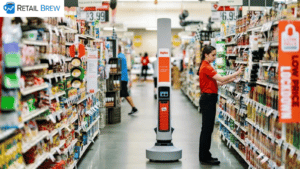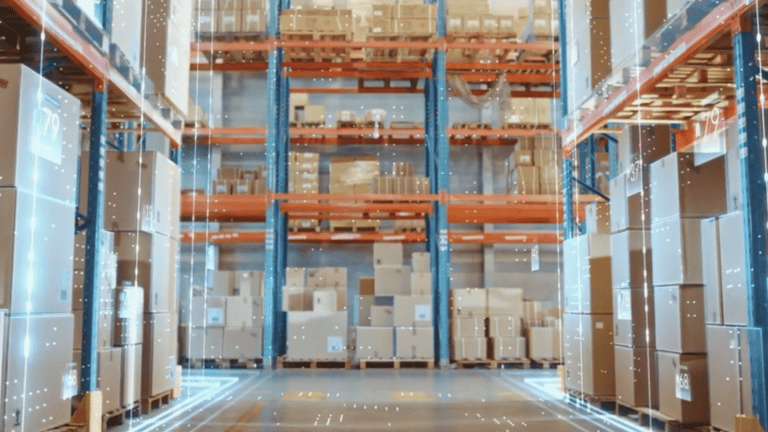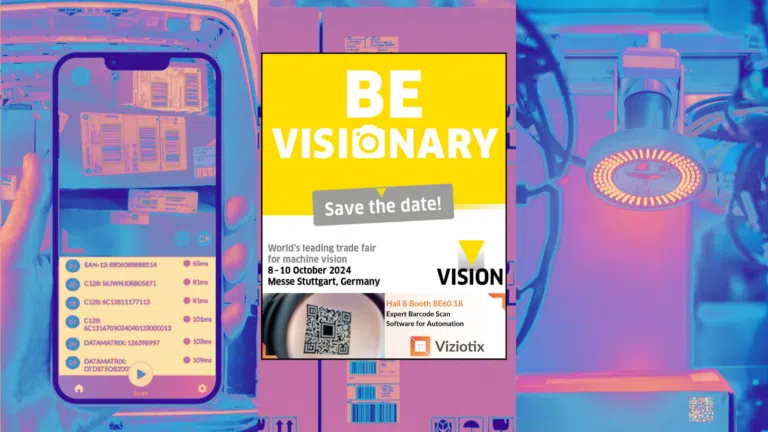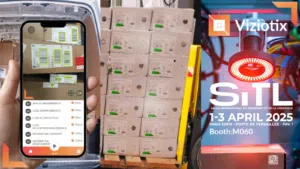Brief History of the Barcode
In this article, we will take a look at the history of the barcode, its impact on modern society, and its future prospects. The barcode has become an integral part of our daily lives, with its presence in supermarkets, airports, and warehouses. It is hard to imagine how we would have kept track of inventory, prices, and other important data without it. But firstly, some fun facts:
Fun Facts About Barcodes
- Barcodes in their modern form were invented by Woodland and Silva and patented in 1952 as: CLASSIFYING APPARATUS AND METHOD. J, WOODLAND ET AL 2,612,994
- The UPC code provides for 100 billion possible combinations. GS1 US has issued around 40 million codes to date.
- Over 10 years before supermarkets, the US rail industry was the first to adopt the technology. The first barcodes were used to mark railway freight cars and were scanned by fixed trackside scanners. See this KarTrak video.
- The first retail barcode scanners were made by the Spectra Physics organization and the Model A scanner weighed 112 lbs. (50 kg!), had 8 PCBs and cost $12,500 (in 1974!).
- The largest barcodes? The Kraay family make some of the world’s largest barcodes by cutting a QR code out of the crops on their family field in Canada. Lately, drone shows have made huge QR codes in the night sky.
- Barcodes in Space. Barcode labels have made it into space. Perhaps that’s why Star Trek films like to have a lot of barcode scanners on the bridge of the Enterprise?
- What does the QR in QR code stand for? The answer is “Quick Response”!
- You can scan barcodes like a pro! Simply download our free Viziotix BarcodeScan Demo App from the app stores:
Barcode Beginnings
The origins of barcodes go back to the first efforts to digitize information. One such method was invented by Samual Morse in 1836. He invented a circuit to send electrical pulses down a wire and coded a character set as dots and dashes. Digitization and Morse code was born!
There are many examples of optical recognition patterns that were proposed and used in certain specialized applications such as card sorting. However, the invention of barcodes is usually attributed to Norman Joseph Woodland and Bernard Silver. In 1948 a local retailer asked the Drexel Institute in Pennsylvania for a solution to speed up the work of cashiers. Woodland, a researcher at Drexel, knew Morse Code and realized that the dots and dashes could be extended downwards into bars of varying widths that would be machine readable. This would provide a way to assign a number to an item. The barcode as we know it was born and US patent 2612994 was filed in 1949. In this first patent, issued in 1952, two types of codes were described, firstly a picket fence like series of bars and secondly, a bulls-eye shaped design.
History of the Barcode
Not many people know that the first widespread usage of barcodes was on US freight cars and not chewing gum! The KarTrak code was a series of colored bars in a ladder format that was mandated in 1967 for all US freight cars and read by a trackside readers. This barcode was used throughout the 1970s until its replacement by RFID in the 1980’s.

It wasn’t until April 3rd 1973 that the UPC (Universal Product Code) barcode was adopted as a standard for use in retail stores in the United States, and the first barcode was scanned on June 26th 1974 in a Marsh store in Troy, Ohio – on a packet of Wrigley’s Juicy Fruit chewing gum. The UPC barcode is a series of vertical lines of varying thicknesses and spaces that represent a numerical code which can be scanned by a barcode reader to identify a product or item. The information is stored only across the barcode (hence 1D barcodes), to make it easy to print, and the height of the barcode just makes it easier for laser scanners to find the lines. Barcodes like UPC, and the European equivalent EAN, are issued by the GS1 organization to allocate codes to manufacturers and items so that they are unique to an item wherever they are scanned in the world.
Since its introduction, the barcode has gone through various iterations and advancements, to add alphanumeric characters (Code 39) and to shorten the lengths (RSS and Code 128).
In order to store more information in barcodes, David Allais of Intermec Technologies Corp invented the stacked barcode, Code 49. This was simply a “stack” of 1D codes that had to be scanned both across and downwards. Code 49 was therefore a type of 2D barcode that needed to be scanned in two dimensions. Other stacked barcodes were invented and eventually this included the widely used PDF417 in 1990. The interest of these barcodes was that they could be scanned by 1D barcode scanners by rastering them up and down the code to collect all the information. PDF417 is still in use today, particularly on printed airline boarding cards.
The advent and reducing price of modern CMOS cameras laid the groundwork for “real” 2D barcodes. These are codes that have to be captured in 2D to be decoded. They cannot be scanned by handheld lasers (hence the slow death of the laser barcode scanner). 2D or “Matrix” barcodes can store more information than the traditional barcode and they are often used in transport, post, parcels and healthcare. 2D barcodes store data in their height and width and require 2D imagers (cameras) to scan.
While these codes may seem new to many, 2D Matrix codes actually date back to the early 1980s. Nasa selected Vericode to mark spacecraft parts and Data Matrix followed soon after. Initially difficult to scan, these codes were only used in niche, high-value applications such as part marking and in healthcare.

In 1992 Masahiro Hara, a Toyota engineer (in the Denso subsidiary), was asked to solve the problem of how to encode more data in barcodes and make them easier to read for high-speed processing. His inspiration came from the checkerboard of the checkerboard game Go. In 1994 the QR code was released as a Matrix code with distinctive “targets” in 3 corners. Although Data Matrix can store information in a smaller area than QR codes, Masahiro’s invention allowed larger quantities of data to be stored and included important target symbols to allow for easy identification. QR codes encode data bits 0 as white and 1 as black. Codes can be composed of 177*177 modules to encode 3kB of data. The 3 squares in 3 corners of the code provide for quick finding and recognition of QR codes in images. This “Quick Response” is the secret of the code’s success.
Enjoy this video about QR codes!
Impact on Modern Society
The barcode has had a significant impact on modern society, particularly in the areas of retail and logistics. It has made it easier and more efficient to keep track of inventory, prices, and sales data, which has led to better supply chain management and reduced costs. By speeding up the check-out in retail, supermarkets became possible and even large hypermarkets could be built with a limited number of fast check-out lanes, each equipped with multi-line laser scanners. Additionally, it has made it easier for consumers to find and purchase products and has facilitated the growth of online shopping and self-scanning.

The barcode has also had an impact on other areas of society, such as healthcare. Barcodes are often used to identify patients, medications, and medical equipment, which can help reduce errors and improve patient safety. They are also used in libraries to track books and other materials, and in manufacturing to track the production process.
Barcodes are increasingly being used to make a digital link between objects and information. A QR code on a restaurant table leads to a menu and online ordering system, or on a product pack, to an online video showing the product benefits. Soon the GS1 standard for retail marking will grow to include 2D codes with the GS1 Sunrise 2027 initiative.
Future Prospects
While the barcode has been around for 50 years, it is still a vital part of our daily lives. However, advancements in technology are leading to new barcode alternatives, such as RFID (Radio-Frequency Identification) and NFC (Near Field Communication). These technologies allow data transfer without requiring line-of-sight between reader and tag but at an added cost and sometimes lack of feedback to the operators.
However, it is unlikely that the barcode will be replaced anytime soon. It is a well-established and widely recognized technology, and it will take time for new technologies to become as widely accepted and adopted. Additionally, the barcode is an incredibly cost-effective and efficient solution for many applications, and it will continue to be used in conjunction with new technologies, including smartphones, robots and drones, for the foreseeable future.

Conclusion
In conclusion, the barcode has had a significant impact on modern society since its introduction 50 years ago. It has made it easier and more efficient to track inventory, prices, and sales data, and has facilitated the growth of Omnichannel retailing. While advancements in technology are leading to new barcode alternatives, it is unlikely that the barcode will be replaced anytime soon. It will continue to be a vital part of our daily lives for many years to come.








